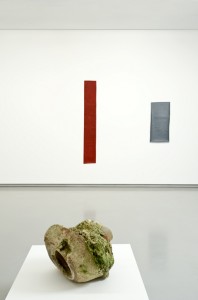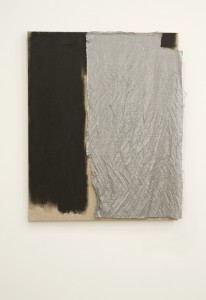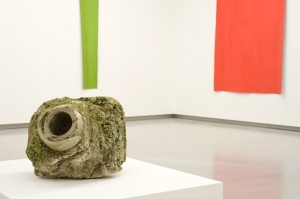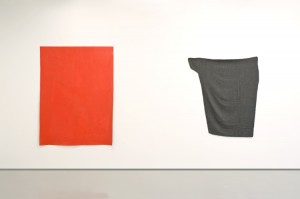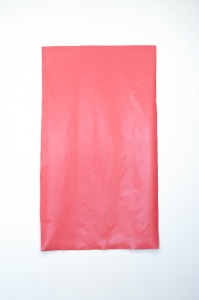In a country in which the dominant culture has a limited pre-history in terms of art and artefacts, one strategy is to recreate these models for ourselves. The culture of the ‘second degree’, as Paul Taylor put it, hangs on this persistent return to the centre or source of creative endeavour as always elsewhere or in a virtual space. Hence, the ground zero of the monochrome, visited again and again and again by so many Australian artists.
The life of forms is clearly not reducible to the more critical agendas of the 1980s. Even if you take to heart the end game of art and our post-colonial situation there is always something more desirous in this act of reclaiming or making one’s own mark.
This is the compelling moment, in a nutshell, of the art of Elizabeth Newman. In her recent body of work on display in the Monash University Museum of Art, this virtual space of art is made concrete in a variety of abstract propositions.
As pristine cut-out fields of colour—this one in green, that one in red … —these canvases are like the colour monochromes of Yves Klein’s first monochrome statements on paper made palpable as textured floating fields that you touch with the eyes. Or, take these assemblages, incorporating cut-out fabrics like Rauschenberg’s veils, anchored and muddied with paint. And this one, stretched over oddly assembled frame armatures to recreate the overall manifestations of painting burst out of the frame in line with those old Greenbergian restrictions.
The elephant in the room is the found object of a piece of old pipe, with attached masonry, bulbous like the Willendorf Venus. As both vessel and void, The origin of life (2012) doubles Courbet’s most famously explicit painting. Who would have thought that a Melbourne building site could reveal such riches? Art history in the hands of Newman is no sterile masterpiece but one that lives and breathes, stripped of old hierarchies, brought down to size, and created with loving attention to the detail of creation and selective dependencies. In her own way, she has thus brought into being something quietly personal and original.
‘The true collector looks for the work that is unfinished’ is a series of commissioned works by Elizabeth Newman, included in Artists’ proof #1, Monash University Museum of Art, Melbourne, 4 October – 15 December 2012.
